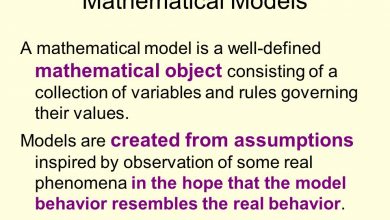What is People Analytics Tool benefits anda Steps
What is People Analytics?
People Analytics is a data collection and analysis procedure, aimed at managing people within companies. In this sense, it refers to processes of:
- collect;
- organization;
- data analysis.
All this information refers to the professionals’ behavior. After all, they are used by companies to monitor the conduct of their employees and are also useful for:
- anticipate trends;
- improve your strategies;
- make more accurate decisions.
In short, People Analytics is the recognition that employees are the most valuable resources of a company and that, therefore, it is necessary to measure to understand what makes them engaged, productive and happy in the work environment.
How useful is People Analytics?
Now that you know what People Analytics is, you must ask yourself, what is its use? It serves to improve people management, for example, reducing turnover , retaining and attracting talent, increasing employee satisfaction and efficiency.
1-Increases the manager’s control of the company
People Analytics is a strong information generation tool. One of its main differentials is using the company’s own success reference to solve problems in areas that are experiencing difficulties and to expand the team without losing quality and the entrepreneur‘s notion of its workforce.
After all, the tool uses the internal reality to know what needs to change, how to change it and when it should happen. Still, it’s a shift from a standard paradigm based on “maybe this will work” or “elsewhere this will work” to “I know this will work”.
2-Cuts excesses and makes HR processes more effective
One of the main obstacles for a company to have a 100% long-term use of its hires is, basically, to get who is hired right. In this sense, knowing how to apply People Analytics in this activity helps a lot.
People Analytics introduces more advanced automation processes, for example via algorithms. Using algorithms adapted by HR as a basis, it is possible to cross-reference the hiring history and the profile of the company’s successful employees with the new objectives, making the elimination of candidates with less potential practically automatic.
3-Optimizes the application of money to the workforce
People Analytics goes far beyond the selection process, however, it touches directly on team management. After all, many companies end up reaching productivity levels due to a loss of employee motivation or a stressful work environment.
Still, it’s a smarter way to deal with this, crossing data such as demographic profile, academic background, performance ratings and, of course, compensation levels.
Based on this, it is possible to measure the influence of factors such as spacing between promotions, presence of underperforming managers or team size with potential problems and apply specific measures to solve the demands, often linked to increased opportunities for internal development and learning .
4-Improves the use of HR itself
While in the standard corporate environment the HR sector is stuck with slow, voluminous processes and with results that are subject to subjective analysis, professionals in the area could be allocated to more interesting initiatives from the point of view of ensuring more productivity for the company.
So, instead of wasting time on labor-intensive and demanding tasks, they could apply their efforts to:
- developing people;
- implementation of programs to prepare leaders;
- maintenance and retention of talents within the company;
- comparison between the analysis of hiring and retention costs;
- administration of the quality index of selection processes.
The People Analytics Steps
The People Analytics process can be broken down into four different steps.
1-Collect
This is the time to collect all the data and information that will be analyzed by the tool. They can come from social networks, from surveys carried out within the company and with candidates, from the résumés of interested parties, from the organization’s management systems and from various other spaces.
2-Calculation
The calculation is the moment to analyze all the collected data. The more varied the data, the wider the possibilities for analysis. In this step, you can discover the answers to all the questions that People Analytics has been asked.
Thus, the result comes in a well-structured and clear way, which makes the next step much easier, which is precisely the analysis of this information.
3-Analysis
This is where the advantages and possibilities of People Analytics show its potential to revolutionize your company’s HR management. From the analyzed data and the answers to the calculations made earlier, it will be possible to make decisions with more basis for the company’s management, allowing it to grow more and more.
In addition, the tool effectively enables the analysis of data that previously did not have the necessary organization to be evaluated. In this way, you can discover new trends, gaps, strengths and problems in your team and in the company as a whole.
4-Modeling
Modeling is the crossing of all data, variables, numbers and surveys previously collected. Through it, it is possible, for example, to discover the connection between the level of education of your employees and the promotions they receive, length of experience with the salary increase and whatever else is necessary.
In this way, it is possible to think of ways to better structure the team, distribute benefits and incentive programs, and even develop awareness campaigns.



